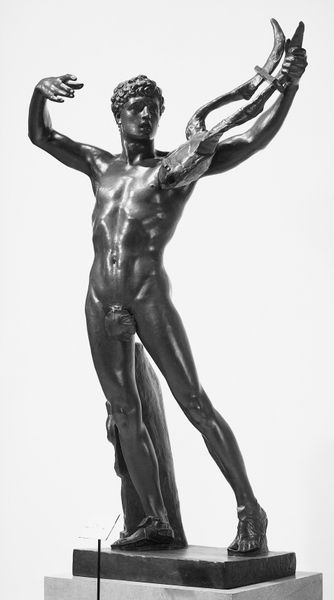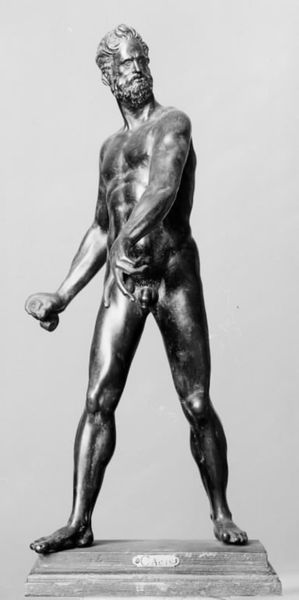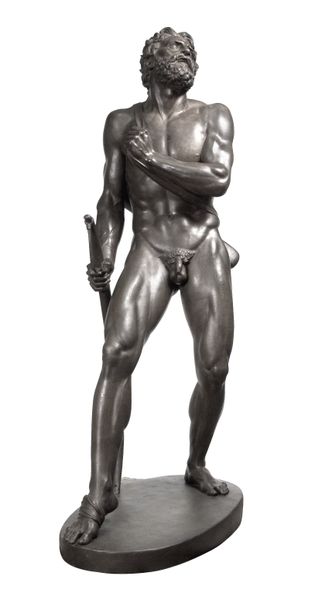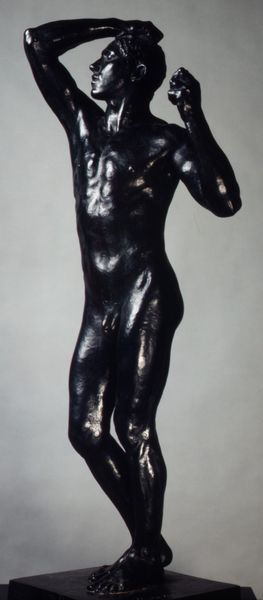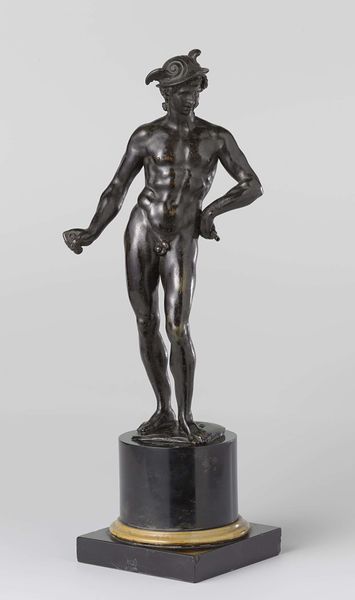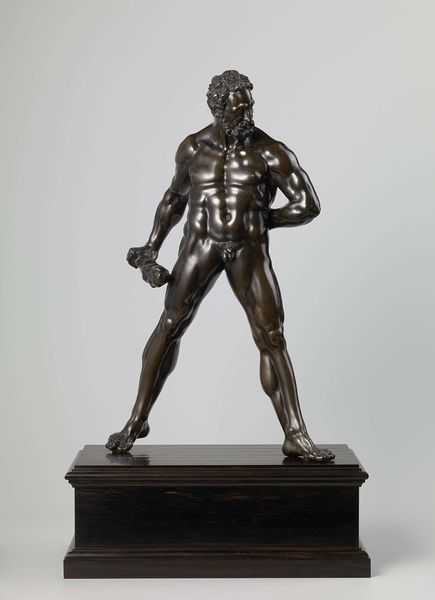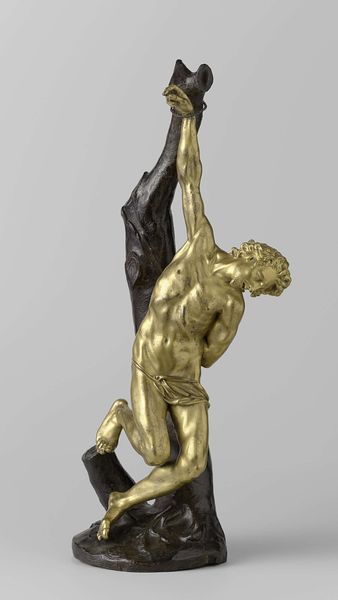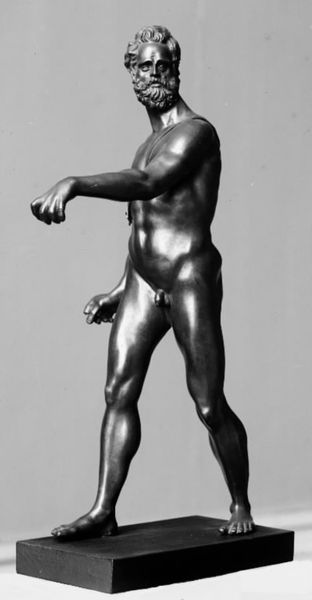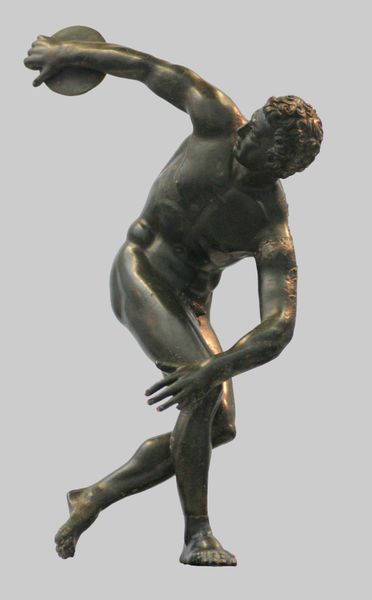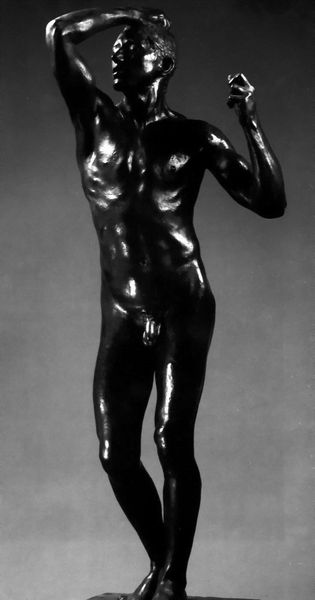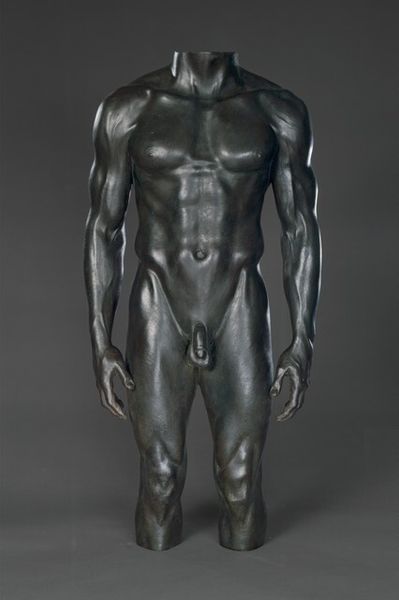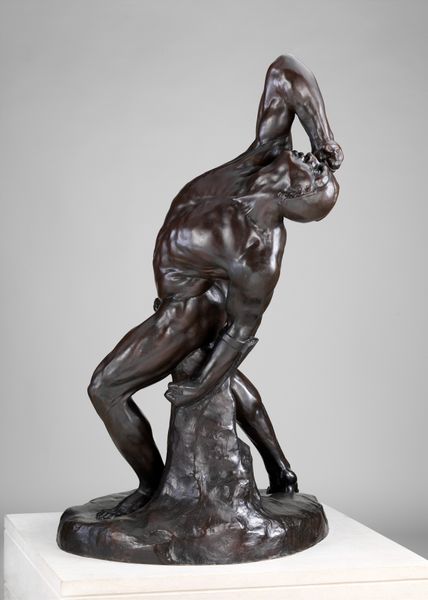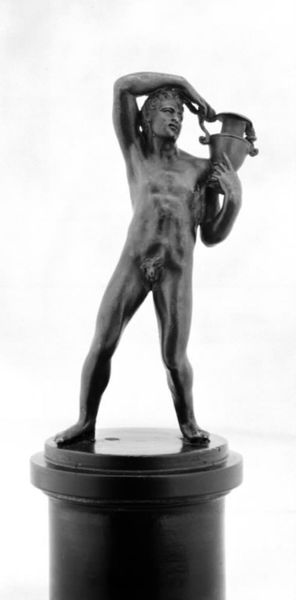
bronze, sculpture
#
art-nouveau
#
bronze
#
figuration
#
sculpture
#
romanticism
#
history-painting
#
male-nude
#
realism
Copyright: Public domain
Auguste Rodin's bronze sculpture, Adam, presents us with a figure burdened by the weight of existence. We see the biblical Adam, the first man, depicted not in triumphant creation but in profound sorrow. His head is bowed, and one hand clutches his knee, gestures of introspection and pain. This pose is not unique to Rodin; it echoes in countless depictions of melancholic figures throughout art history. We see it in depictions of the penitent Magdalene or the mourning Virgin Mary. What is it about this posture that speaks so powerfully to our collective memory? It's as if the anguish of human experience is encoded within these very gestures. Consider the evolution of the "melancholic" pose, from religious sorrow to secular brooding. It’s a testament to art’s ability to carry and transform emotional information. The weight of history, of human error, and mortality converge in this single figure, engaging us on a deeply subconscious level. Ultimately, Rodin's Adam is a powerful reminder of the cyclical nature of human experience, the enduring presence of pain, and the constant search for redemption.
Comments
No comments
Be the first to comment and join the conversation on the ultimate creative platform.
